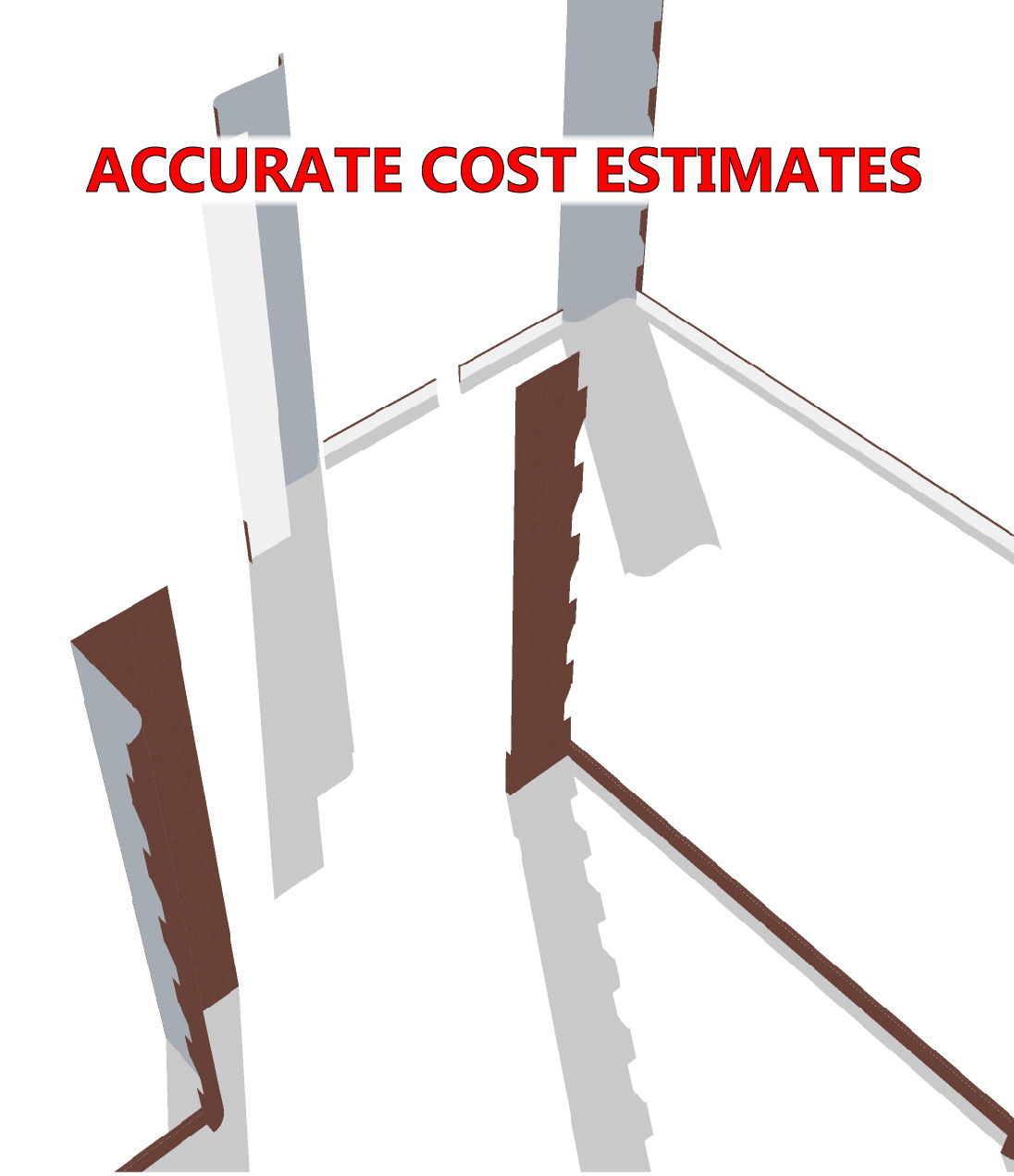Although this Technical Bulletin is intended to provide general information on glass cleaning and maintenance parts of it could serve as the basis for a building’s window cleaning specification that can be added to the service contract.
JVSBS Technical Bulletin – Architectural Glass and Frame Cleaning and Protection
- CLEANING
- The need for proper handling and protection of Architectural glass begins at the manufacturing facility and continues through its packaging, shipment, storage, and installation. In order to maintain the glass surface proper cleaning must be accomplished throughout the life of the building beginning with a thorough cleaning immediately following construction and on a regular schedule thereafter. Glass can be permanently damaged if the proper cleaning procedures aren’t followed. Although the methods for cleaning or restoring the window frames are different, many of these points apply to those surfaces as well.
- During Construction
- Glass and frame manufacturer’s are extremely careful with their products, installers generally are too. Other construction trades are less attentive to the glass and frames. Much of the damage that occurs during building construction can be attributed to those trades. Workers applying paint and other finishes or waterproofing, spacklers, landscapers, carpenters and particularly masons and waterproofers commit various acts that can either damage the glass and frames or create conditions that can lead to damage if not properly resolved. Welding sparks contacting the glass surface cause a thermal shock which results in pitting. For these and other reasons glass and glazing frames must be protected during construction and all trades should be required to take care not to affect the glass and frames as they complete their work. Materials that come in contact with any finish, including glazing and window frames, have to be properly removed in a timely manner. The abrasive effect of concrete or mortar slurry that is splashed on glass or frames or runs down on them can be especially damaging so those materials should be removed or washed off while they are still wet. Masonry after-wash, used to clean brick after pointing and some waterproofing chemicals can damage glass and frame finishes so those operations need to be properly conducted. Care is often even more important if the glass is tinted or reflective.
- Immediately Following Construction
- The first complete cleaning of the glass and frames is referred to as the “Construction Clean”. It differs from regular, periodic cleaning done afterward because of the conditions mentioned above. If materials from construction activities are on the glass or frames, removing them can constitute an entirely different task than standard window cleaning so the specifications for the two operations will be fundamentally different. For example, the Construction Clean is best done from a swing stage scaffold and may involve multiple sets of tools and various chemicals. On the other hand standard window cleaning is typically done in bosun’s chairs with nothing more than cleaning solution, brushes, micro-fiber rags and a squeegee. Also, if the activities of sub-contractors such as masons, painters or iron-workers have resulted in damage to the glass or frames recovering the cost of repairs or restoration can only be done if the damage can be attributed to them in a reasonable amount of time. One of the purposes of the Construction Cleaning is to locate that damage so that the costs can be recovered.
- Regular, Periodic Glass and Frame Cleaning
- Sources of Dirt, Contaminants and Damage
- Glass seems impervious but in fact there are numerous conditions that make it susceptible to damage. Among the conditions that can harm glass and window frames are: Alkalai Attack – Alkalis leached from concrete panels by rain or fluorides in the wash-off from concrete floors can stain and etch glass if allowed to remain for even short periods of time. Damage From Acids and Pollutants – Glass is resistant to most acids but acid rain, which contains sulfuric and nitric acid, and occasionally others, can produce compounds and reactions that damage glass. Oxidized Metals – Iron oxide from rusting steel and aluminum oxide can etch and stain glass. Chlorides form what are called Surface Reactive Salts (SRSs) that damage glass and many organic and inorganic materials can become chemically bonded to glass and very hard to remove. These are all reasons why frequent cleaning of glass and frames is needed to maintain its value.
- Sources of Dirt, Contaminants and Damage
- Cleaning Procedure
- Determine Glass Type
- The first thing a window cleaner should do is determine whether the glass is clear, tinted or reflective. If the tint or reflective element of the glass is a surface film the side on which the film has been applied should be ascertained. Surface damage is more noticeable on reflective glass and films are softer than glass. If the reflective or tinted component is exposed, as could be the case with a film, either on the exterior or interior, special care must be taken when cleaning in order to avoid scratches or coating removal.
- Evaluate The Glass
- Before a window cleaner embarks on the “production phase” of the cleaning process he or she should clean a small area or one window then stop and examine the surface for any damage to the glass and/or reflective coating. If there are surface contaminants that effect the cleaning, such as abrasive materials left from some other building maintenance or construction activity, he should discover those conditions immediately and make the proper adjustments in his method before he proceeds on the rest of the building. This should be done in direct sunlight as slight or minor damage may not be visible in the shade, if there is cloud cover or if the sun is low.
- Use of Blades
- If material is adhered to the glass, one-inch wide razor blades may be used on clear glass. Use of wider blades and scrapers by window cleaners and other, non-glazing trades, is a significant source of damage to architectural glass. Even one inch wide razor blades should not be used on tinted or reflective glass.
- Blades are to be presented to the glass with the cutting edge flat to the surface and the blade at an acute angle. Minimal force, sufficient to dislodge the adhered material only, is to be applied by pushing the back of the blade across the surface in one direction only. Do not pull the blade or scrape in a back and forth motion. This could cause particles under the blade to scratch the glass.
- Window Cleaning
- The window cleaning solution should be changed frequently and applied to the glass with brushes or scrubbers designed for the purpose and then removed completely with a widow cleaning squeegee. The solution is to be one designed for cleaning architectural glass. Other products commonly used, such as dish washing liquid, can leave residues on glass, frames and adjacent surfaces which attract dirt and can support bacterial growth. Any marks that remain after squeegeeing the glass (streaks, smudges and watermarks) and any cleaning solution that has not been cleared by the squeegee are to be removed with a cloth or chamois so that the glass is uniformly clear. Cleaning should begin at the top of the building and continue successively to the lower levels to allow for the removal of residue and cleaning solution that may have spilled on the lower floors. Cleaning procedures should be conducted in a manner that precludes blowing of the cleaning solution and residue onto already cleaned glass. Glass surfaces can get quite warm in direct sunlight. Care has to be exercised under these conditions so that the cleaning solution doesn’t evaporate before it can be squeegeed or wiped off the window. Glass should not be cleaned when it is too hot. Glass can not be cleaned if the solution freezes either. The window frames are to be brushed and wiped down and all water and cleaning solution should be dried from the gaskets and sealants.
- Frequency
- The frequency at which cleaning is necessary varies according to location. When dirt and residue appear on interior and exterior glass surfaces it needs to be removed. Buildings at high elevations in remote locations will have to be cleaned less often than those in industrial cities on sea coasts. The only way to establish the cleaning period is to pay close attention to how long it takes for the glass to become soiled. It is possible, through careful observation, to determine the source of the surface contamination, which is important. If alkalies or fluorides from concrete or metal oxides are etching glass that’s much worse than if the glass is merely dusty.
- Determine Glass Type
- PROTECTION
- Frequent Cleaning
- Cleaning the glass is in itself a form of protection. Removing acid rain that is in the form of dry deposition can prevent harmful chemical reactions and removing debris before it bonds chemically will also serve to protect the glass from damage. When the glass is cleaned the frames should be cleaned too. In fact, if the alkilis, oxides, chlorides and other damaging materials that are washed from the glass are left on the frames, damage to the frames can be accelerated. In multi-story buildings it may be impractical to use a separate process or materials to clean the frames than those used for glass cleaning so the frames should be rinsed with the glass cleaning solution and wiped down as the final step in the widow cleaning operation.
- Glass Sealing
Hydrophobic and hydrophylic coatings that seal the glass are effective, although temporary means of protecting architectural glass. They should be applied when the glass is new and reapplied as needed. It is sound practice to apply these coatings to glass that has been restored. - Frame Sealing
- Window frame manufacturers use coatings and treatments to protect the metal and most do so very well but none are impervious to the elements. Coatings and sealers are available that protect these finishes from the same contaminents that damage glass. Application of these protective materials can be done when the building is new or after the frames have been restored.
- Frequent Cleaning




